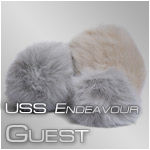Nebula Classification
Created by Captain Benjamin Byrne on Sat Sep 1st, 2012 @ 8:24pm
Nebula Classification |
||
|
A nebula is an interstellar cloud of dust, gas and plasma, where star formation usually occurs. In the year 2400, the Federation introduced a new system to classify nebulae. The new system first assigns the nebula a letter designation based upon its general composition. If the nebula has any unusual quirks, it is assigned an additional number designation. For example, a Class F2 Nebula is a Dark Nebula that contains disruptive electromagnetic radiation. |
| Nebula Class A · Emission Nebula |
||
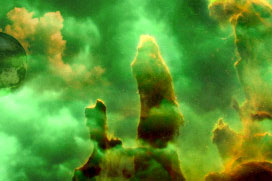 |
COMPOSITION: Hydrogen, helium, oxygen AVERAGE SIZE: 100 - 5,000 ly AVERAGE TEMP.: 10° - 20° K LIFESPAN: 1 - 2 million years COLOUR: Red, green, blue EXAMPLE: Lagoon Nebula, Veil Nebula PICTURED: Krai`jih`na Nebula |
|
| Nebula Class B · H II Region |
||
COMPOSITION: Hydrogen, helium AVERAGE SIZE: 20 - 2,000 ly AVERAGE TEMP.: 10,000° K LIFESPAN: 1 - 2 million years COLOUR: Red, pink EXAMPLE: Eagle Nebula PICTURED: Cone Nebula |
|
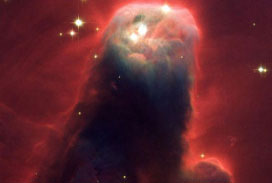 |
| Nebula Class C · Bok Globule |
||
 |
COMPOSITION: Hydrogen, helium, carbon AVERAGE SIZE: 1 ly AVERAGE TEMP.: 3° K LIFESPAN: 1 - 2 million years COLOUR: Black EXAMPLE: NGC 281, NGC 1999, BHR 71 PICTURED: IC 2499 |
|
| Nebula Class D - Reflection Nebula |
||
COMPOSITION: Hydrogen, carbon, iron, nickel AVERAGE SIZE: 100 ly AVERAGE TEMP.: 25,000° K LIFESPAN: 10 million - 10 billion years COLOUR: Blue, purple EXAMPLE: Trifid Nebula, Witchhead Nebula PICTURED: Pleiades Cluster |
|
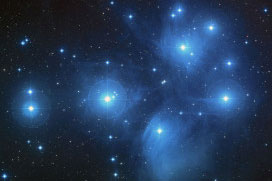 |
| Nebula Class E · Planetary Nebula |
||
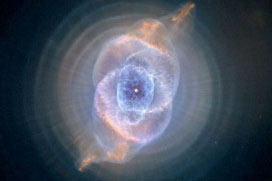 |
COMPOSITION: Carbon, oxygen, nitrogen, calcium AVERAGE SIZE: 1 ly AVERAGE TEMP.: 10,000° K LIFESPAN: 10,000 years COLOUR: Orange, green, blue EXAMPLE: Ring Nebula, Hourglass Nebula PICTURED: Cat's Eye Nebula |
|
| Nebula Class F - Dark Nebula |
||
COMPOSITION: Hydrogen AVERAGE SIZE: 200 ly AVERAGE TEMP.: 7° K LIFESPAN: 1 - 2 million years COLOUR: Black EXAMPLE: Coalsack Nebula, Snake Nebula PICTURED: Horsehead Nebula |
|
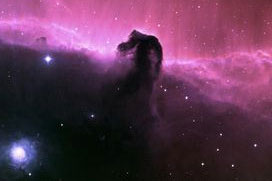 |
| Nebula Class G · Supernova Remnant |
||
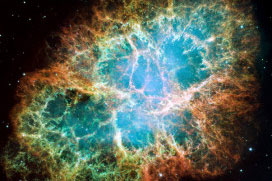 |
COMPOSITION: Ionized hydrogen, oxygen AVERAGE SIZE: 3 ly AVERAGE TEMP.: 10,000,000° K LIFESPAN: 1,000,000 years COLOUR: Varies; typically orange, blue EXAMPLE: Tycho's Remnant, 1987A PICTURED: Crab Nebula |
|
| Nebula Class H - Nova Remnant |
||
COMPOSITION: Ionized hydrogen, oxygen AVERAGE SIZE: 0.5 ly AVERAGE TEMP.: 5,000° K LIFESPAN: 300 years COLOUR: Varies; typically blue, orange EXAMPLE: RR Pictoris PICTURED: T Pyxidis |
|
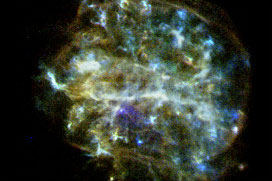 |
| Nebula Class I · Solar Nebula |
||
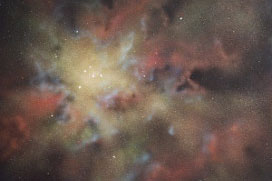 |
COMPOSITION: Hydrogen, helium, oxygen AVERAGE SIZE: 100 AU AVERAGE TEMP.: 150° K LIFESPAN: 2,000,000 years COLOUR: Yellow, orange EXAMPLE: Panak PICTURED: A generic solar nebula |
|
| Nebula Class J - Wolf-Rayet Nebula |
||
COMPOSITION: Helium, carbon, oxygen AVERAGE SIZE: 0.5 ly AVERAGE TEMP.: 25,000° - 50,000° K LIFESPAN: 1 - 2 million years COLOUR: Blue EXAMPLE: NGC 6888, NGC 3199 PICTURED: Gamma Velorum |
|
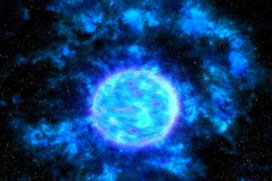 |
| Nebula Class K · Inversion Nebula |
||
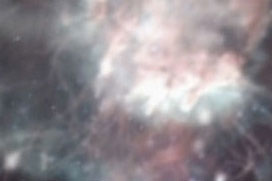 |
COMPOSITION: Ionized plasma strings AVERAGE SIZE: 200 AU AVERAGE TEMP.: 10,000° K LIFESPAN: 5 - 10 years COLOUR: Pink EXAMPLE: Lukkaris Nebula PICTURED: Marayna's Nebula |
|
Additional Subtype Classifications
Type 1 · Protomatter
A nebula that contains amounts of protomatter.
Type 2 · Disruptive
A nebula that contains disruptive electromagnetic radiation.
Type 9 · Shadow
An ultra-dense nebula with constituent compounds that create sensor shadows. Prolonged exposure is detrimental to humanoid nervous systems.
Type 10 · Deuterium
A nebula that contains deuterium.
Type 11 · Argon
A nebula that contains argon. Thetazenon, fluorine and sirillium can also be present.
Type 13 · Mutara
A nebula that contains high levels of static discharge and ionized gases; renders shields and sensors inoperable.
Type 16 · Protostellar
A nebula still in its formative stages. Has high levels of particle flux.
Type 17 · Sirillium
A nebula that contains amounts of sirillium.
Categories: Stellar Cartography
